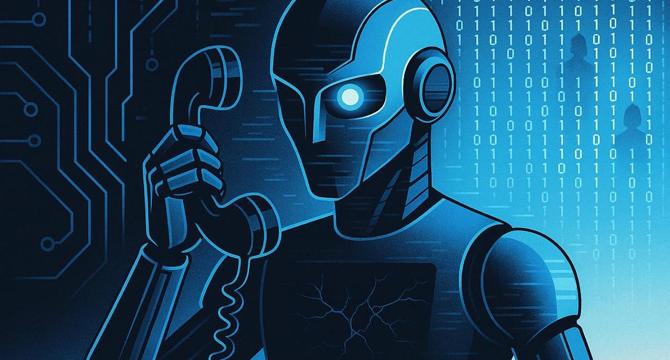Cyber Security News
Medium
327

Image Credit: Medium
Unlocking the Mystery of Encrypted Traffic: The Power of TLS Inspection
- TLS inspection is like giving your security system X-ray vision to spot hidden threats while keeping data secure.
- It decrypts, inspects, and re-encrypts TLS-encrypted traffic, providing crucial visibility for security and policy enforcement.
- TLS inspection strikes a balance between visibility and privacy by intelligently decrypting traffic using advanced TLS policies.
- Implementing TLS inspection helps organizations gain visibility into encrypted traffic, mitigate risks, and strengthen their cybersecurity posture.
Read Full Article
19 Likes
Medium
439

Image Credit: Medium
Central Bank Digital Currency (CBDC) for Cross-Border Infrastructure Financing
- The demand for infrastructure financing is projected to exceed $94 trillion by 2040, highlighting the need for more efficient models.
- Central Bank Digital Currencies (CBDCs) present a transformative use case for cross-border infrastructure financing, leveraging blockchain technology for transparency and efficiency.
- This CBDC model benefits governments with control over project timelines, reduces bureaucracy, minimizes corruption, and ensures transparent fund flows.
- Private contractors, regulators, auditors, international donor institutions, and local communities also benefit from faster payments, real-time data access, accountability, and improved project delivery.
Read Full Article
26 Likes
Medium
90
Image Credit: Medium
When Deleted Isn’t Gone — Privacy Risks in Electronics Repair
- The electronics repair industry, valued at around $19 billion globally, lacks sufficient regulatory oversight on customer privacy, leading to data exploitation risks.
- Recent research indicates that repair technicians frequently access and even share customers' private data, such as personal photos and videos, despite it being unnecessary for the repair task.
- Customers' assumption of deleted files being permanently erased is debunked, as skilled technicians can easily recover such data due to the technical aspects of data storage.
- Various studies highlight a high incidence of privacy violations within the electronics repair sector, with a significant percentage of technicians found to snoop on data or copy it without consent.
Read Full Article
5 Likes
Medium
337

Image Credit: Medium
Reclaiming AI: How to Host Your Own LLM with Ollama, Docker, and Open WebUI
- The world is experiencing an AI revolution with large language models (LLMs) being integrated into daily tools.
- A phase is approaching where individuals can host powerful LLMs on their infrastructure for privacy and flexibility.
- Hosting your own LLM provides a strategic advantage, especially for the privacy-conscious or those building for the edge.
- The process involves installing Ubuntu, running Linux install, adding authentication token, and forwarding ports to make the LLM globally accessible.
Read Full Article
5 Likes
TechCrunch
413

Image Credit: TechCrunch
Trump administration takes aim at Biden and Obama cybersecurity rules
- President Trump signed an executive order on Friday revising cybersecurity policies set by Obama and Biden.
- Trump removed parts of Biden's order that allowed digital ID documents for public benefit and testing of AI in defending energy infrastructure.
- The White House claims that the focus is now on identifying and managing vulnerabilities in AI cybersecurity.
- Trump's order also removed requirements for agencies to use quantum-resistant encryption and for federal contractors to attest to software security.
Read Full Article
24 Likes
Tech Radar
273

Image Credit: Tech Radar
Cybercriminals love this little-known Microsoft tool a lot - but not as much as this CLI utility for network management
- A recent analysis of 700,000 security incidents reveals widespread exploitation of Microsoft tools by cybercriminals for breaching systems undetected.
- Netsh.exe, a command-line utility for managing network configurations, emerged as the top tool abused by cybercriminals, being found in a third of major attacks.
- PowerShell was running on 73% of endpoints, well beyond administrative use alone, and its dual-use nature makes detection challenging.
- Despite being deprecated, wmic.exe is still widely present in environments and used by attackers to blend in due to its legitimate appearance.
Read Full Article
16 Likes
Securityaffairs
152

Image Credit: Securityaffairs
Experts found 4 billion user records online, the largest known leak of Chinese personal data from a single source
- Over 4 billion user records were found exposed online in a massive breach linked to the surveillance of Chinese citizens.
- Cybersecurity researchers discovered a 631GB unsecured database containing around 4 billion records, mainly involving Chinese users, potentially used for profiling and surveillance purposes.
- The leaked data included information from WeChat, Alipay, and other sources, posing serious risks of phishing, fraud, blackmail, and state-backed intelligence activities.
- This incident represents the largest known leak of Chinese personal data from a single source, with affected individuals having no clear way to respond.
Read Full Article
9 Likes
Dev
31

Image Credit: Dev
Debugging Memory Leaks in Node.js: A Complete Guide to heapdump, clinic.js, and v8-tools
- Memory leaks in Node.js applications can slowly degrade performance and lead to crashes, making them dangerous and stealthy.
- Effective techniques like heapdump, clinic.js, and v8-tools can help identify and fix memory leaks in Node.js applications.
- Understanding how memory leaks occur in Node.js is crucial, with causes including unclosed event listeners and circular references.
- Heapdump allows for manual and automatic memory snapshots, aiding in the analysis of memory usage in Node.js applications.
- Clinic.js provides real-time performance profiling and insights into memory usage patterns and garbage collection impact.
- V8-tools offer deep analysis of the V8 engine, including detailed heap statistics and heap snapshot generation.
- Memory leak detection algorithms like MemoryLeakDetector can track memory trends and trigger heap dumps for analysis.
- Comparing debugging approaches, heapdump offers low overhead, clinic.js provides real-time insights, and v8-tools allow for deep analysis.
- Proactive monitoring, code review checklists, and performance testing integration are recommended best practices for memory debugging.
- Combining multiple tools for analysis, proactive monitoring, and understanding memory patterns are key takeaways for effective memory debugging.
- Set up basic memory monitoring, integrate tools like heapdump and clinic.js, and establish baselines for memory performance in your applications.
Read Full Article
1 Like
Medium
62

Spear Phishing - The Targeted Cyberattack You Need to Watch Out For
- Spear phishing is a targeted form of phishing where cybercriminals craft tailored messages to deceive individuals or organizations by appearing as a trusted source.
- The attacks are personalized and often aim to trick victims into revealing sensitive information, clicking malicious links, or downloading malware-infected attachments.
- Spear phishing is harder to detect than generic phishing and requires vigilance. Practical steps to protect against it include verifying requests independently, enabling Two-Factor Authentication (2FA), limiting public information, and using anti-phishing tools.
- In 2025, spear phishing is expected to leverage artificial intelligence for creating hyper-personalized messages. Staying aware, verifying requests, and securing accounts are crucial in defending against these evolving threats.
Read Full Article
3 Likes
Medium
309

Phishing Attacks-The Digital Con Game You Need to Avoid
- Phishing attacks involve attackers pretending to be trusted entities to trick individuals into revealing sensitive information or installing malware.
- These attacks exploit human tendencies like trust or fear, and spotting them has become harder with AI-generated content making phishing emails more convincing.
- Common types of phishing attacks include spear phishing, vishing, and smishing, each targeting different vulnerabilities.
- To protect yourself, verify sources, use two-factor authentication, keep software updated, be cautious with links, educate yourself and others about phishing, use anti-phishing tools, and report suspicious messages.
Read Full Article
18 Likes
Medium
107

Cybersecurity: Protecting Yourself in a Digital World
- Cybersecurity is the practice of protecting digital systems from unauthorized access, attacks, or damage, safeguarding personal information, financial accounts, and online identity.
- Global cybercrime costs are expected to reach $10.5 trillion annually by 2025, with individuals, businesses, and governments all being targets of cyberattacks.
- Key principles of cybersecurity include the CIA Triad, guiding the security of personal devices and corporate networks.
- Actionable steps to enhance cybersecurity include using strong passwords, enabling two-factor authentication, keeping software updated, being cautious with emails and links, securing Wi-Fi, backing up data, educating about social engineering, and using antivirus software.
Read Full Article
6 Likes
Secureerpinc
210

Image Credit: Secureerpinc
LockBit Hacked: Ransomware Gang’s Secrets Exposed
- LockBit, a notorious ransomware gang, was recently hacked, exposing the gang's secrets.
- LockBit operates like a business, offering ransomware-as-a-service, and conducts attacks through various tools and techniques like software vulnerabilities, stolen credentials, and phishing emails.
- An unknown entity defaced LockBit's dark web affiliate panels, revealing sensitive data such as chat logs and victim names.
- Law enforcement efforts like Operation Cronos have targeted LockBit, seizing critical intelligence, arresting members, and disrupting the group's operations.
Read Full Article
12 Likes
Medium
421

Image Credit: Medium
Consent Theater: How Privacy Notices Lie to Your Face
- Privacy notices on websites are often deceptive and create an illusion of control for users.
- By clicking 'Accept All' on cookie banners, users unknowingly give away their location, search history, browsing preferences, and potentially biometric data.
- This behavior, termed as 'consent theater,' presents a facade of privacy protection while actually compromising user data.
- The blog reveals how websites and apps manipulate opt-in flows, exploit psychological factors to discourage resistance, and highlights the lack of genuine user protection.
Read Full Article
25 Likes
Medium
381

Image Credit: Medium
How 10M AI call center stolen identities could change your cybersecurity policy
- A multi-stage cyberattack exploited vulnerabilities in a call center's AI infrastructure, involving Typosquatting on PyPI, backdoor deployment in API Gateway, and S3 bucket hijacking for data exfiltration.
- The attack led to the compromise of build servers, lateral movement into the API Gateway through forged admin JWT tokens, and exfiltration of over 10 million call records within hours.
- Protection measures include implementing zero-trust for ML pipelines, hardening API Gateways, securing cloud storage, and preparing for AI-specific threats with incident response playbooks.
- The breach highlights the increasing targeting of AI infrastructure by cybercriminals, emphasizing the need to shift to zero-trust architectures, integrate security into every component, and automate audits using relevant tools.
Read Full Article
22 Likes
Medium
58

Image Credit: Medium
Building Resilient Cybersecurity Tools: How to Handle API Rate Limits
- Delays in cybersecurity operations due to API rate limits can lead to catastrophic consequences.
- Implementing resilience patterns like intelligent retry logic and persistent caching can help handle API rate limits effectively.
- Resilient API handling ensures operational continuity, cost management, data consistency, and faster incident response.
- By planning for failure, caching aggressively, retrying intelligently, monitoring everything, and testing resilience, cybersecurity tools can remain operational despite API rate limits.
Read Full Article
3 Likes
For uninterrupted reading, download the app